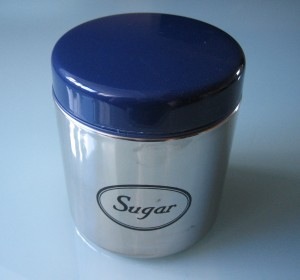 New York city, uptown #2 train, Saturday night. Not too crowded, most people are wearing their subway stares – avoiding eye contact, eyes glazed over, ipod earbuds in place, bodies rocking with the motion of the train. My trip isn’t long enough to pull out something to read, so I start to scan the ads that run above the seats– something I’ve entertained myself with since I was a little kid.
New York city, uptown #2 train, Saturday night. Not too crowded, most people are wearing their subway stares – avoiding eye contact, eyes glazed over, ipod earbuds in place, bodies rocking with the motion of the train. My trip isn’t long enough to pull out something to read, so I start to scan the ads that run above the seats– something I’ve entertained myself with since I was a little kid.
One whole side of the subway car I was in was filled with posters for New York City’s “Are You Pouring On The Pounds” campaign — aimed at teaching people to reduce their sugar intake (and lose or keep off weight) by cutting down on sugary drinks. It also encourages New Yorkers to drink water, seltzer or low-fat milk instead of the sweet stuff.
The posters are filled with liquid pouring out of bottles of soda, “sports” drinks or sweetened iced tea and turning into blobs of fat as it reaches the glass. Large graphics leave you with no doubt about the number of teaspoons or packets of sugar in each drink — or the total amount of liquid sugar that you could drink daily – as shown in the photo above.
For example: a 20 ounce bottle of soda is equivalent to 16 packets of sugar and a 32 ounce gigantic size cup – the kind so popular in movie theaters, gas stations, and arenas — contains the equivalent of 26 packets of sugar.
Do You Forget To Count The Calories You Drink?
It’s hard to overeat without noticing it. But, many people who gain weight — and can’t figure out why — forget to include the calories in what they drink. Sugary drinks can add hundreds of calories and they don’t even make you feel full.
On average, Americans now consume 200 to 300 more calories each day than 30 years ago, with nearly half of those calories coming from sugar-sweetened drinks. A survey of adult New Yorkers shows that more than 2 million drink at least one sugar sweetened soda or other sweetened beverage each day – often at 250 calories a pop. Teenagers who drink sugary beverages get an average of 360 calories from them each day. (They’d have to walk 70 city blocks to use up that many calories.)
Some Facts
A teaspoon of sugar weighs about four grams and each gram of sugar has four calories – or about 16 calories per teaspoon of sugar. On average, Americans consume about 22 teaspoons of added sugar a day – the equivalent of around 350 calories. (Added sugar refers to the extra, empty calorie, added sweeteners, not the sugar that naturally occurs in foods like fruit and milk.)
The quickest way to decrease some of that sugar is to cut down on soda and sweetened drinks. Sugary drinks, including sweetened tea or sweetened water that claims to be healthy, account for about one-third of added sugars.
Eating large quantities of sugar can lead to obesity and health problems like diabetes and heart disease. The American Heart Association recommends a daily max of six teaspoons of added sugar for women and nine teaspoons for men. That’s quite a bit less than 22 teaspoons Americans generally average. Too many spoonfuls of sugar may create the need for medicine rather than making it easily go down!



